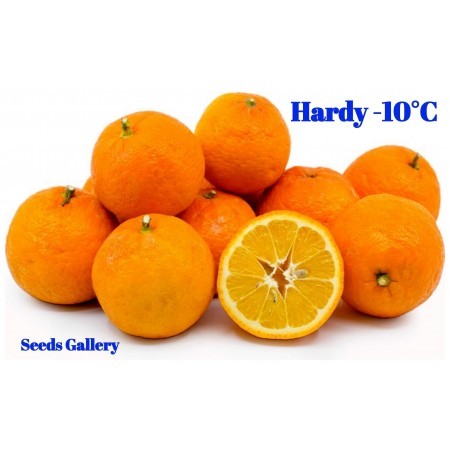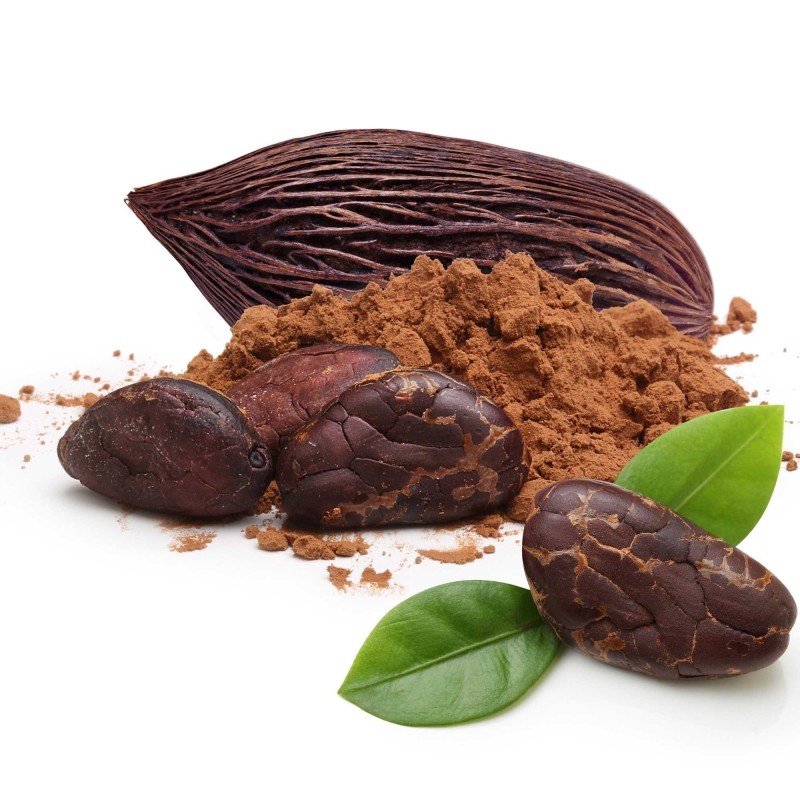
Cacao Tree Seeds (Theobroma cacao)
Cacao Tree Seeds (Theobroma cacao)
Price for Package of 2 seeds.
As you can see from our pictures, our cocoa variety is larger than all others. Theobroma cacao also cacao tree and cocoa tree is a small (4–8 m (13–26 ft) tall) evergreen tree in the family Malvaceae
Cacao Tree Seeds (Theobroma cacao)
Price for Package of 2 seeds.
As you can see from our pictures, our cocoa variety is larger than all others.
Theobroma cacao also cacao tree and cocoa tree, is a small (4–8 m (13–26 ft) tall) evergreen tree in the family Malvaceae, native to the deep tropical region of America. Its seeds are used to make cocoa powder and chocolate.
Description
Leaves are alternate, entire, unlobed, 10–40 cm (3.9–16 in) long and 5–20 cm (2.0–7.9 in) broad. The flowers are produced in clusters directly on the trunk and older branches; this is known as cauliflory. The flowers are small, 1–2 cm (0.39–0.79 in) diameter, with pink calyx. While many of the world's flowers are pollinated by bees (Hymenoptera) or butterflies/moths (Lepidoptera), cacao flowers are pollinated by tiny flies, Forcipomyia midges in the order Diptera.[2] The fruit, called a cacao pod, is ovoid, 15–30 cm (5.9–12 in) long and 8–10 cm (3.1–3.9 in) wide, ripening yellow to orange, and weighs about 500 g (1.1 lb) when ripe. The pod contains 20 to 60 seeds, usually called "beans", embedded in a white pulp. The seeds are the main ingredient of chocolate, while the pulp is used in some countries to prepare a refreshing juice. Each seed contains a significant amount of fat (40–50%) as cocoa butter. Their most noted active constituent is theobromine, a compound similar to caffeine.
Taxonomy and nomenclature
Cacao (Theobroma cacao) belongs to the genus Theobroma classified under the subfamily Sterculioidea of the mallow family Malvaceae. Cacao is one of 22 species of Theobroma.
The generic name is derived from the Greek for "food of the gods"; from θεος (theos), meaning "god," and βρῶμα (broma), meaning "food".
The specific name cacao is derived from the native name of the plant in indigenous Mesoamerican languages. The cacao was known as kakaw in Tzeltal, K’iche’ and Classic Maya; kagaw in Sayula Popoluca; and cacahuatl[dubious – discuss] in Nahuatl.
The cupuaçu, Theobroma grandiflorum, is a closely related species also grown in Brazil. Like the cacao, it is also the source for a kind of chocolate known as cupulate or cupuaçu chocolate.
The cupuaçu is considered of high potential by the food and cosmetics industries.
Distribution and domestication
T. cacao is widely distributed from southeastern Mexico to the Amazon basin. There were originally two hypotheses about its domestication; one said that there were two foci for domestication, one in the Lacandon area of Mexico and another in lowland South America. More recent studies of patterns of DNA diversity, however, suggest that this is not the case. Motomayor et al.[4] sampled 1241 trees and classified them into 10 distinct genetic clusters. This study also identified areas, for example around Iquitos in modern Peru, where representatives of several genetic clusters originated. This result suggests that this is where T. cacao was originally domesticated, probably for the pulp that surrounds the beans, which is eaten as a snack and fermented into a mildly alcoholic beverage.[5] Using the DNA sequences obtained by Motomayor et al. and comparing them with data derived from climate models and the known conditions suitable for cacao, Thomas et al. have further refined the view of domestication, linking the area of greatest cacao genetic diversity to a bean-shaped area that encompasses the border between Brazil and Peru and the southern part of the Colombian-Brazilian border.[6] Climate models indicate that at the peak of the last ice age 21,000 years ago, when habitat suitable for cacao was at its most reduced, this area was still suitable, and so provided a refugium for the species. Thomas et al. speculate that from there people took cacao to Mexico, where selection for the beans took place.
Cacao trees grow well as understory plants in humid forest ecosystems. This is equally true of abandoned cultivated trees, making it difficult to distinguish truly wild trees from those whose parents may originally have been cultivated.
History of cultivation
Cultivation, use, and cultural elaboration of cacao were early and extensive in Mesoamerica. Ceramic vessels with residues from the preparation of cacao beverages have been found at archaeological sites dating back to the Early Formative (1900-900 BC) period. For example, one such vessel found at an Olmec archaeological site on the Gulf Coast of Veracruz, Mexico dates cacao's preparation by pre-Olmec peoples as early as 1750 BC. On the Pacific coast of Chiapas, Mexico, a Mokaya archaeological site provides evidence of cacao beverages dating even earlier, to 1900 BC. The initial domestication was probably related to the making of a fermented, thus alcoholic beverage.
Several mixtures of cacao are described in ancient texts, for ceremonial or medicinal, as well as culinary, purposes. Some mixtures included maize, chili, vanilla (Vanilla planifolia), and honey. Archaeological evidence for use of cacao, while relatively sparse, has come from the recovery of whole cacao beans at Uaxactun, Guatemala and from the preservation of wood fragments of the cacao tree at Belize sites including Cuello and Pulltrouser Swamp. In addition, analysis of residues from ceramic vessels has found traces of theobromine and caffeine in early formative vessels from Puerto Escondido, Honduras (1100-900 BC) and in middle formative vessels from Colha, Belize (600-400 BC) using similar techniques to those used to extract chocolate residues from four classic period (circa 400 AD) vessels from a tomb at the archaeological site of Rio Azul. As cacao is the only known commodity from Mesoamerica containing both of these alkaloid compounds, it seems likely these vessels were used as containers for cacao drinks. In addition, cacao is named in a hieroglyphic text on one of the Rio Azul vessels. Cacao was also believed to be ground by the Aztecs and mixed with tobacco for smoking purposes
| growing instructions | |
| Vermehrung: | Seeds |
| Pretreatment: | soak seeds for 2-3 hours in warm water. |
| Stratification: | 0 |
| Sowing Time: | all year |
| Sowing depth: | See picture 6 |
| Sowing substrate: | Use high-quality, sterile potting soil |
| Sowing temperature: | +25 - +28°C |
| Sowing Location: | bright + keep constantly moist, not wet |
| Germination time: | 2-4 weeks. |
| Note: | direct Sow onto bed in May. |
| Watering: | Water regularly during the growing period |
|
|
|
| Organic Seeds ? | Organic Seeds |
|---|---|
| Organic/natural ? | Organic/Natural: Yes |
| Edible ? | Edible |
| Pretreatment of sowing ? | Soak in water before sowing 12-24 h |
| Perennial ? | Perennial plant : Yes |
| Ručně vybraná semena? | Ručně vybraná semena |
| Suitable for growing in flower pot ? | Suitable for pot: Yes |


Vaše hodnocení nelze odeslat
Nahlásit komentář
Zpráva odeslána
Váš podnět nelze odeslat
Napište svůj názor
Zkontrolovat před odesláním
Vaši recenzi nelze odeslat
🌍 Globální doručení z EU
Zásilky odesíláme do celého světa z Evropské unie prostřednictvím registrované pošty s potvrzením o doručení.
📦 Sledování zásilky
Pro sledování zásilky se přihlaste ke svému účtu a přejděte do sekce Historie objednávek > Detail, kde najdete sledovací číslo.
Mezinárodní sledování: 17Track
Pro čísla jako RGxxxxxxHR: Posta.hr sledování
🕒 Informace o sledování jsou dostupné až 24 hodin po odeslání zásilky.
⚠️ Důležité upozornění
Dobírka není možná.
Pravidelně kontrolujte složku spam / nevyžádaná pošta ve své e-mailové schránce.
Používejte pouze kontaktní formulář na našich stránkách.
E-maily zaslané přímo na naši adresu nemusí být přijaty.
📱 Povinné telefonní číslo
Při objednávce uveďte své mobilní číslo s předvolbou země.
Příklad: +420 123 456 789
🚚 Podmínky doručení
Registrované zásilky vyžadují podpis příjemce.
Neobjednávejte, pokud:
chcete doručení do poštovní schránky
nebudete doma k převzetí zásilky
chcete, aby balík byl doručen sousedovi (❌ není možné)
📬 Pokud zadáte adresu poštovní schránky a zásilka bude ztracena, nemáte nárok na vrácení peněz.
↩️ Vrácení zásilky a opětovné odeslání
Pokud je zásilka z jakéhokoliv důvodu vrácena zpět k nám:
Budete hradit náklady na zpětné zaslání 2 €
A také náklady na opětovné odeslání
⏱ Zpoždění a sledování
Pokud sledování ukazuje, že zásilka je stále u odesílatele, znamená to, že je na cestě.
Kontaktujte místní poštu s číslem sledování pro aktuální informace.
Nejsme poštovní službou a zásilku za vás nesledujeme.
Nezodpovídáme za dobu doručení.
🔍 Vyšetřování ztráty zásilky lze zahájit až 30 dní po odeslání.
✈️ Možnosti dopravy
| Typ dopravy | Doba zpracování | Pojištění | Možné zpoždění | Poznámka |
|---|---|---|---|---|
| Standardní | 7–10 pracovních dnů | ❌ | 7–14 pracovních dnů | Nejlevnější možnost |
| Prioritní | 1–7 pracovních dnů | ❌ | 3–10 pracovních dnů | Prioritní zpracování – ne nutně rychlejší doručení |
| Pojištěná | 1–7 pracovních dnů | ✅ | 3–10 pracovních dnů | Vrácení peněz při ztrátě (do 150 €) |
🕒 Odhadovaná doba doručení:
V rámci EU: 3–20 pracovních dnů
Celosvětově: 5–30 pracovních dnů
Příklady doby doručení do USA: 27, 22, 19, 17, 13 dnů
💳 Platební metody
💶 Bankovní převod (SEPA / IBAN / SWIFT-BIC)
Uveďte číslo objednávky v platebním příkazu (např. SGS-19811702).
Chybějící reference může způsobit zpoždění nebo zrušení objednávky.
Pokud platba nedorazí do 7 dnů, objednávka bude automaticky zrušena.
🅿️ PayPal
Přijímáme platby pouze v eurech.
Nastavte měnu na euro při platbě.
💳 Platba kartou
Platby kartou probíhají přes náš web: Exotic Seeds Store
Akceptujeme Visa, MasterCard, American Express, Diners Club, UnionPay, JCB, Discover a další.
💡 Zákazník hradí všechny transakční poplatky.
Pro rychlejší vyřízení objednávky pošlete potvrzení o platbě.
📅 Další informace
Objednávky nevyřizujeme a neodesíláme o víkendech (sobota a neděle).
Před objednáním si vždy přečtěte důležitá oznámení na našem webu (svátky, speciální podmínky atd.).
📫 Pozor:
Neposílejte nám zprávy přímo na e-mail. Používejte pouze kontaktní formulář na našem webu.
Related Products























